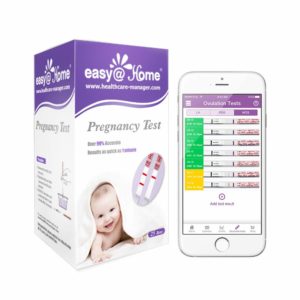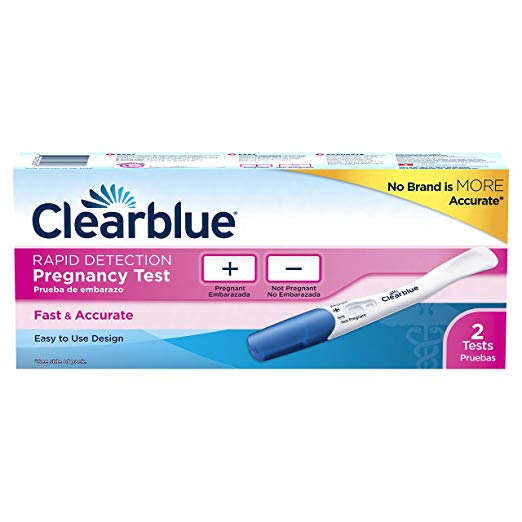Don’t know if you’re pregnant? It can be quite nerve-wracking to not know for sure. There may be some excitement and hope. But there’s also a bit of anxiety mixed in. Of course, the only way you’ll really know for sure is to take a pregnancy test. Now, they can check you out at a doctor’s clinic or a hospital but making that trek might be more than your nerves can take. Plus, they aren’t exactly cheap. Fortunately, there’s another option – an at-home pregnancy test. Not only will you get the answer to that burning question, you can do so within the comfort of your own home. But which one do you use? There are plenty of pregnancy tests available and not all of them have the same sensitivity. If you want to find the best option for you, check out our list of the best pregnancy tests in the market today.
First Response Early Result Pregnancy Test
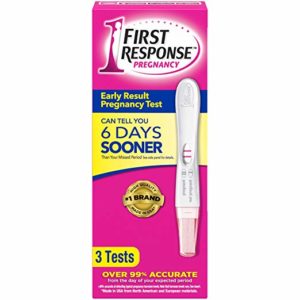
The FRER, as it is often called by its users, is quite possibly the most accurate at-home pregnancy test – over 99% accurate from the day of your expected period. It is also the only one that can be used as early as 5 days prior to your missed period. The reason for its popularity is because of the test’s sensitivity. It can detect 4 major forms of hCG levels. And the curvy handle as well as the thumb grip makes it easy to hold the stick as you pee (though you can also just dip it into a cup of your urine). However, this test isn’t cheap. Some users found it hard to read. And there is the risk of a false positive when the test detects a chemical pregnancy.
- most sensitive test in the market
- easy to use
- you can pee on it or dip it
- can be hard to read the results
- expensive
- may give a false positive due to chemical pregnancy
ClinicalGuard® HCG Pregnancy Test Strips
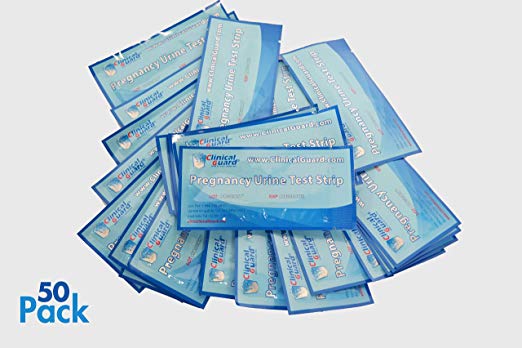
If you need to do some multiple testing, then the ClinicalGuard Urine Pregnancy Test is your best option. Not only is it accurate when taken on the day of your missed period (sensitivity is at 25 mIU hCG), it’s also incredibly cheap, each test costing you about 25 cents. Compared to the FRER, this is not incredibly sensitive and might not be ideal for those who are impatient. However, because of the cost, you can keep on testing yourself after your missed period if you want to check how your pregnancy is progressing. One huge drawback to this is that it’s more involved than just peeing on a stick since it is a strip test. You’ll need to pee in a cup first and then dip it in.
- very affordable
- accurate at around 10 dpo (days past ovulation)
- perfect for those who want to do multiple testing
- not as sensitive as FRER for early detection
- requires you to pee in a cup and dip it in
Wondfo Combo Ovulation and Pregnancy Tests
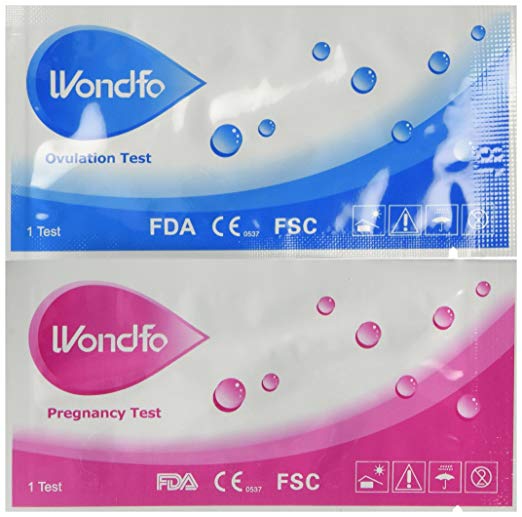
Wondfo is another cost-effective option for those who are trying to conceive. This combo package comes with 50 ovulation test strips and 20 pregnancy test strips. You can use the LH Ovulation Test to find out when you are going to ovulate and then use the pregnancy test to see if you got positive results from your efforts. Like the ClinicalGuard test, this one is also a strip test where you will have to dip it into a cup of your first morning pee. Its sensitivity is also similar, detecting HcG at a level of 25 mIU. The ovulation tests are pretty accurate. However, the pregnancy tests strips are not the easiest to read. Fortunately, you can just grab another one and test again without causing a hole in your pocket.
- combo package
- LH Ovulation Test is very accurate
- very affordable (around $0.33 per test)
- not easy to read
- not as sensitive as the FRER
AccuMed Pregnancy Test Strips
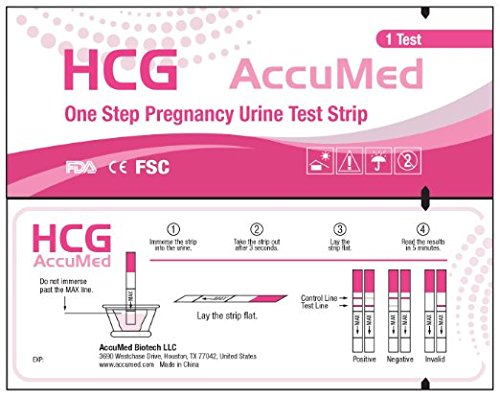
AccuMed Pregnancy Test Strips are similar to our other affordable options. One pack of 25 tests comes out at around $0.32 which means you won’t feel bad if you want to do multiple tests. This particular pregnancy test is also as sensitive as some of our other picks (25 mIU/ml HCG) and can be used as early as 5 days before your missed period. These strips are accurate most of the time and there are no evaporation lines. However, some users report indent lines on their tests which make it harder to read. Also, this uses the dipping method which requires you to get a plastic cup and do some cleanup afterwards.
- affordable
- can test as early as 5 days before period
- no evaporation lines
- some tests have indent lines
- requires the use of a cup
Easy@Home 25 Pregnancy (HCG) Urine Test Strips
The Easy@Home 25 Pregnancy Urine Test Strips is much cheaper than a lot of our other picks. Unfortunately, it isn’t as sensitive. It can detect pregnancy as early as a day before your missed period. There have been reports of early detection but not as consistent as other tests on our list. So, this may not be an ideal option for those who don’t want to wait. However, if you just want to have something on hand to make sure you aren’t pregnant or you like doing multiple tests throughout the days before and after your missed period, this is a cost-effective solution. Also, while these are fairly accurate, it does take a while (5-10 minutes) for the results to show so you’ll need to wait a bit before throwing out the test.
- cheap
- perfect for multiple testing
- accurate
- hard to read at times (faint line)
- not for early detection
- results take awhile to show
Clearblue Plus Pregnancy Test
If you want something that’s easy to use and lets you know you did things right, the Clearblue Plus Pregnancy Test is what you’re looking for. Unlike strips, you can pee directly onto the test though you can also opt to dip it into a cup. What we love about this is that the tip changes color when you’ve sampled it properly. The tip is also wider for easier targeting. Even better, the test comes with a FloodGuard to prevent excess urine from entering the test and causing error. In addition, the results are very easy to read – a plus sign for positive and a negative sign for not pregnant. The test can be used as early as 5 days before your missed period. Plus, the ergonomic handle makes it easy to hold in place while you pee. However, the test is expensive in comparison to pregnancy test strips so it’s not ideal for multiple testing. And it has a lower accuracy rate (only 56%) for early detection. Also, it does show evaporation lines around 15 to 30 minutes after the test.
- wider, color-changing tip
- ergonomic handle
- easy to read
- expensive
- low accuracy rate for early detection
- has evaporation lines around half an hour after the test is used
Pregmate Pregnancy Urine Test Strips
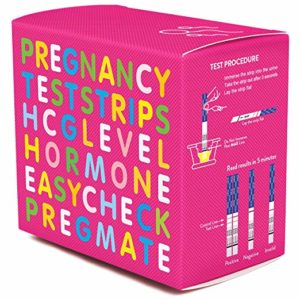
The Pregmate Pregnancy Urine Tests are quite similar to others we’ve reviewed – affordable, uses the dipping method, and perfect for multiple testing. One thing that does stand out with this particular test is the fact that the strips seem “sturdier” (made of thicker material) and wider which makes it easier to read. Plus, there are no indents or evaporation lines that would make it hard to read. However, there have been some reports of dye runs. It does require cleanup after use.
- wider strip
- easy to read
- affordable
- requires the use of a cup
- some reports of dye runs
Pregnancy Test Buying Guide:
Wondering if you’re pregnant? You’re not alone it that. Plenty of women have been in your shoes. And while you can make an appointment with your doctor, there’s something to be said about learning the truth on your own, surrounded by the comfort of your home. If you’ve ever gone down that particular lane in the grocery store, you’ll already know that there are tons of at-home pregnancy tests you can use. However, not all of them have the same sensitivity which can affect the accuracy of the result. If you’ve been trying to conceive, getting a false negative can be soul-crushing. To help you avoid that situation, we’ve gathered everything you need to know about pregnancy tests so you can make the right choice for you.
How does a pregnancy test work?
We all know that a pregnancy test will require you to pee on a stick. Enough movies and TV shows have let us in on that little bit of fact. What we don’t know is what about your urine says you’re pregnant. When an embryo (fertilized egg) has become embedded in your uterus, your body will start producing a hormone known as human chorionic gonadotropin or hCG. During the early months of pregnancy, your hCG levels double around every 72 hours which will reach its peak at the end of your first trimester. hCG levels do vary between individuals. At three weeks since the start of your last period, your hCG levels may range from 5 to 50 mIU/mL. At six weeks, it could be anywhere from 1,080 to 56,500 mIU/mL. This is why a pregnancy test is more accurate the later you take it.
Take note that some tests are able to detect hyperglycosylated hCG (H-hCG) which is a variation of hCG. This hormone is released much earlier, around some time after fertilization. Using a test that can detect this means that you’ll be able to know if you’re pregnant much earlier.
When should I take a pregnancy test?
If you’re trying to conceive, it might be pretty hard to resist testing yourself early such as a few days after ovulation. This is because not all pregnancy tests have a high level of sensitivity. Some of them may be unable to detect the hCG hormone due to its low levels if you check too early. A false negative may mean having to test yourself again later. Experts recommend using a pregnancy test on the day of your expected period or after in order to get a more accurate result.
How do I take a pregnancy test?
At-home pregnancy tests can be performed in two different ways. You can collect your pee in a cup and dip the stick into it (like with the ClinicalGuard® HCG Pregnancy Test Strips) or put urine onto a special container using an eyedropper. Or, you can hold the stick right where your urine stream will pass so that it will catch it midstream like with the Clearblue Plus Pregnancy Test. The best time to take a pregnancy test is when you wake up using your first morning pee. The results will take a minute or more to appear, depending on the test. You may get a change in color, a plus or minus sign, or a line. Some digital tests will even show the words “pregnant” or “not pregnant.” Don’t be too worried about what you need to do because all tests come with instructions. Just make sure to follow them exactly in order to get an accurate reading.
Regular or Digital?
At-home pregnancy tests come in two types – regular or analog and digital. Naturally, digital pregnancy tests are more expensive. But they do give you a definitive answer to your question (telling you straight out “pregnant” or “not pregnant”) instead of making you guess what the line/color/symbol is telling you. Another thing to take note of regarding digital pregnancy tests is that the results take more time to appear compared to a manual one. Yes, it’s only a matter of minutes but it could feel like a lifetime for someone anxiously waiting to get her answer.
Should I go with a brand name or generic?
Well, to be honest, branded pregnancy tests have been proven to be just as accurate as generic tests like AccuMed Pregnancy Test Strips if you take them a week after your missed period. However, some who have been trying to conceive for a long time might not be able to wait that long. In that case, a brand name pregnancy test may just be the right choice for you. Just keep in mind that it’ll cost more money.
Early detection or regular detection?
As we’ve already mentioned, some tests are more sensitive than others. The First Response Early Result Pregnancy Test has actually been tested by third parties to be the most sensitive early pregnancy test in the market. You can use the test as early as 5 days before your expected period. However, this type of test is still not as accurate as any other pregnancy test taken a week after the missed period. Also, it’s going to cost you more. Moreover, there’s a chance that what the test is detecting is only a chemical pregnancy. A chemical pregnancy is where the body produces the hCG hormone because the egg was fertilized but it doesn’t implant or doesn’t develop after implantation. While a false positive is a relatively rare occurrence, it is something that you’ll need to keep in mind if you want to go with an early detection test.





